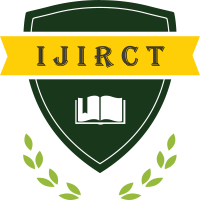Design and Finite Element Analysis of High Speed Compressor Gearbox Unit
Author(s): Nihad Hasan Talib, Gopi Krishna
Publication #: IJIRCT1201011
Date of Publication: 31.07.2015
Country: India
Pages: 38-43
Published In: Volume 1 Issue 1 July-2015
Abstract
The project is concerned with the design and analysis of some of the key elements of a gearbox that is used to drive compressor units. Since the pinions rotate at high speeds, the complete gear system is subjected to noise and vibrations. The gear system is composed of one bull gear and two pinions. The helical gears are designed as per AGMA standard procedure. Conventional parallel axes helical gears with Involute profile teeth are insensitive to center distance assembly errors and possess line contact under design assembly condition. However, helical gears are very sensitive to axial misalignments, causing discontinuous transmission errors and edge contacts, resulting in noise and vibrations. Therefore, the helical gears are modified to attain a localized point contact and to avoid edge contact. The modified helical gear set contains conventional Involute profile, with profile crowning as well as longitudinal crowning The geometrical models of helical gear are drawn in CATIA V5, Since, the gear system rotates at high speed; this may cause high imbalance forces and vibrations due to the shaft assembly. So, the shafts are designed as integrated shafts for two pinions and a shrink fit assembly for bull gear and shaft. The non-linear finite element contact analysis of helical gear tooth is done using finite element software, ANSYS workbench 14.5.7. For economy, different models of gear are checked and finally single tooth contact analysis is done for different positions of gear contact.
Keywords: Helical Gear Design AGMA, Modeling CATIA V5 Finite Element Analysis ANSYS
Download/View Count: 459
Share this Article
